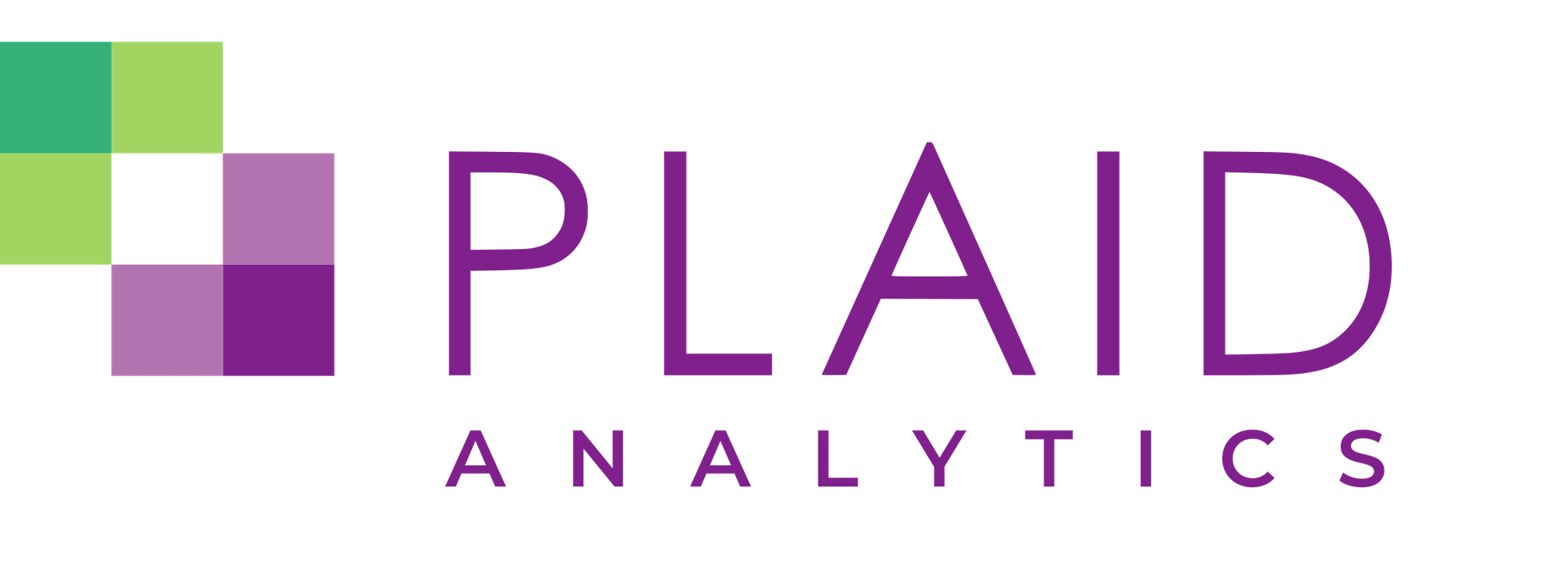Get the newest posts directly in your inbox:

When Strategy Takes a Back Seat to Spreadsheets
At too many colleges and universities, senior leaders are still spending hours each week building spreadsheets. Enrolment funnels, retention reports, financial aid summaries—their nights are spent reconciling cells when they should be shaping strategy....

When "Very Good" Isn't Good Enough: Data Quality in Surveys
Survey participation is an investment — in staff time, in student time, and in institutional strategy. The value of lean, comparable data isn't just in your own data, but what you learn when you can trust the comparison....

Too Many Targets, Not Enough Clarity
Last week you may have seen my post on Canada’s new international student targets, and seen the offshoot: The data nerd in me can't help but scream. If you’ve tried to make sense of Canada’s international enrolment targets this year, you’re not alone -...

2025 Fall Update
Plaid launches new website and blog subscription options, partners with MortarCAPS, presents at CIRPA, and answers your frequently asked questions about automatically populating a data warehouse from a live data source....

International Student Targets in Canada are Changing (again....)
The 2025 Canadian federal budget brings new clarity - and new uncertainty - for Canadian postsecondary institutions navigating the ongoing recalibration of international enrolment. There's some positives for higher education and some challenges. For a great roundup, check out the Budget Commentary by our colleagues at Higher Education...

Planting a Tree
I planted a tree in our back yard as part of an elementary school project. In the first year I made sure it had appropriate water, soil, and enough light. But I could barely see its early growth. Similarly, changes in higher education take time to ripple through the system....
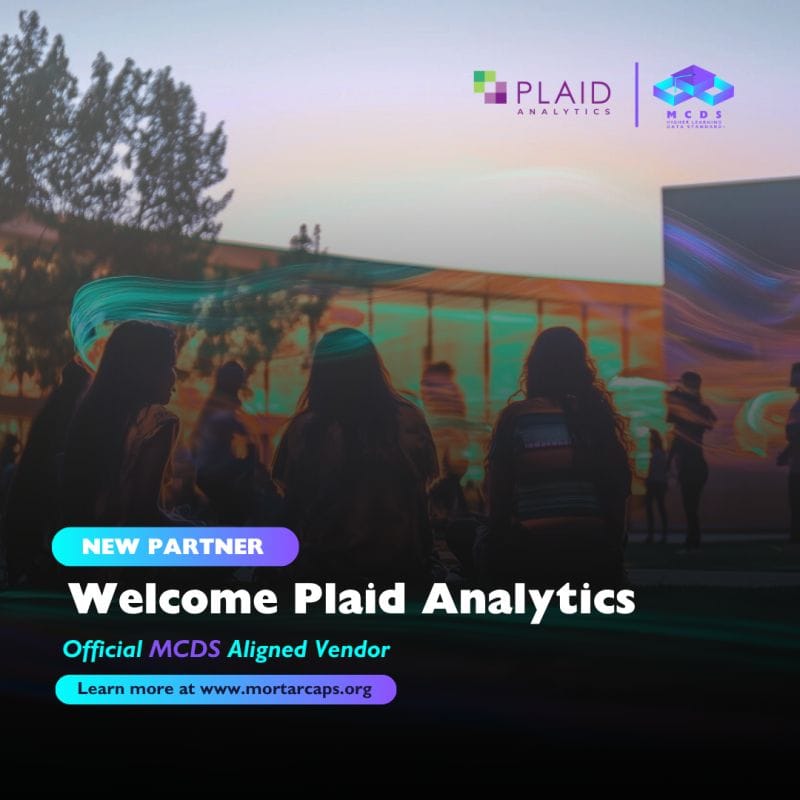
Plaid Analytics Joins MortarCAPS Higher Learning Data Standard
Today we are thrilled to announce that we have joined the MortarCAPS Higher Learning Data Standard (MCDS) as a vendor partner. The MCDS is a not-for-profit initiative focused on improving data interoperability across the global post-secondary education sector. By providing a shared, open standard for how higher-ed data is structured...

Scenarios vs. Predictions
Relying only on predictions risks locking institutions into a false sense of security. Scenarios, on the other hand, open up conversations about resilience, trade-offs, and strategic agility....
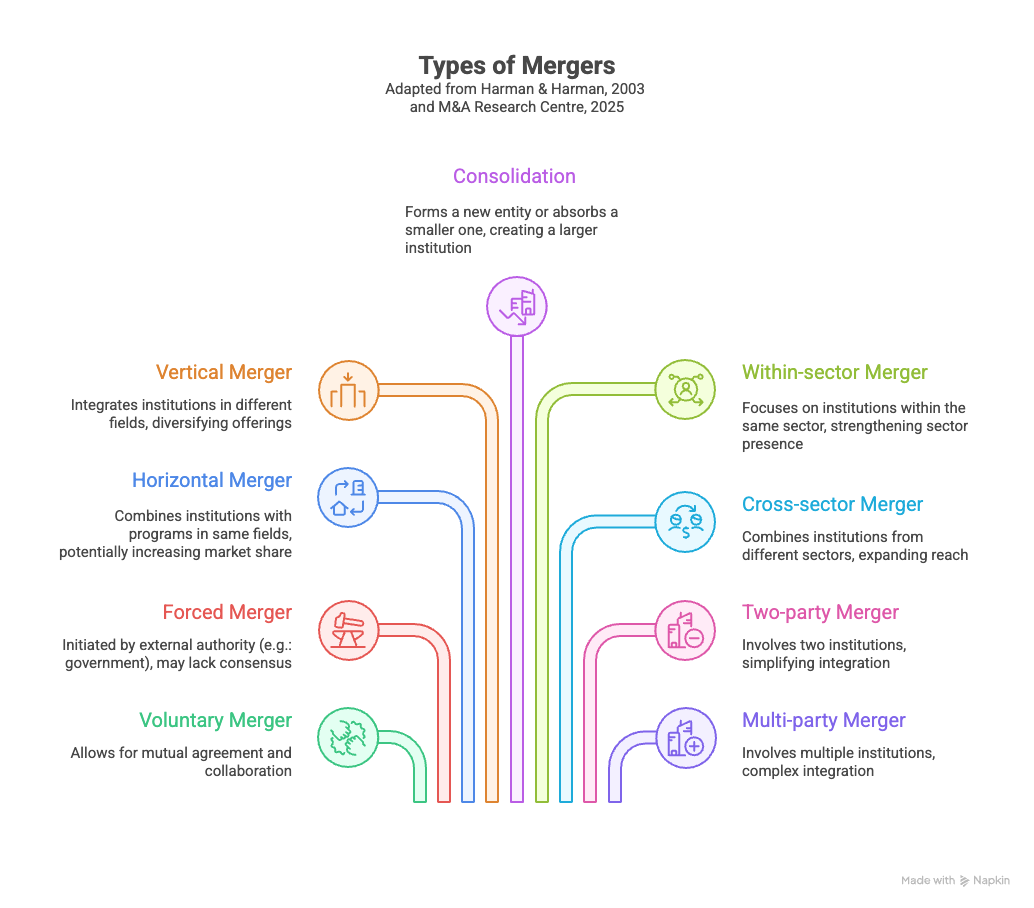
Mergers & Acquisitions in Higher Ed
Mergers and acquisitions are increasingly seen as tools to address financial stress, enrolment challenges, and competitive pressures. But they are not without pitfalls. Yet, when handled well they can create opportunities for students and preserve legacies that might otherwise be lost....

The Wisdom of the Crowd in Enrolment Forecasting
The crowd sees signals that may not show up in your data systems—early student concerns, housing bottlenecks, employer demand shifts. Together, they create a more balanced view of the future....

Setting Enrolment Targets in Higher Education - Part 4: How Predictive Modelling and AI are Transforming Enrolment Planning
Enrolment Forecasting is fundamentally a predictive modelling process: given a series of inputs, what are the outputs likely to be? But enrolment target setting is a little different. It’s a human process, informed by data: what is our strategic goal, and how do we get there?...

Setting Enrolment Targets in Higher Education - Part 3: Where do Institutions get Stuck? Common Pitfalls in the Enrolment Target-Setting Process.
Many people I speak with feel they don’t know how to set a high quality target that is informed by data and research. Instead, they end up using what they used last year, with some difference over time. Most years, this method will work. But it carries some risks....
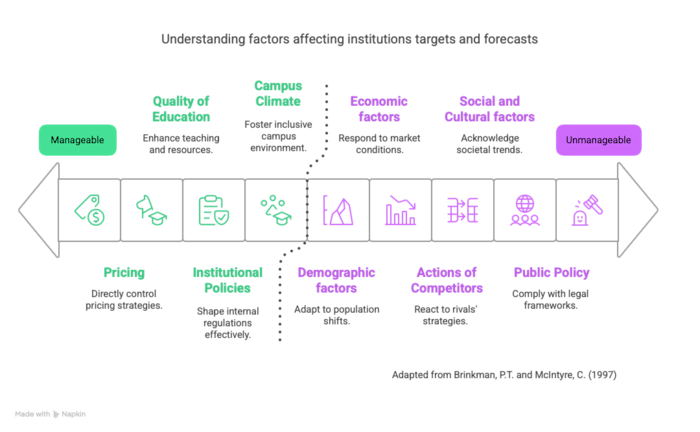
Setting Enrolment Targets in Higher Education - Part 2: How do Enrolment Targets Become Reality?
In the last blog, we discussed how targets are created. They can be bottom-up (starting from the faculties) or top-down (starting from the Provost). Targets can be detailed or very general, tied to revenue or to a block grant, or for specific groups of students. They can be influenced by...

Announcing HESA x Plaid: Data with Purpose
Today we are announcing a new partnership with Higher Education Strategy Associates focused on Data with Purpose. Canada’s postsecondary institutions face urgent and complex decisions. Institutions are being asked to do more with less. That is why HESA and Plaid are proud to announce a strategic partnership grounded in...
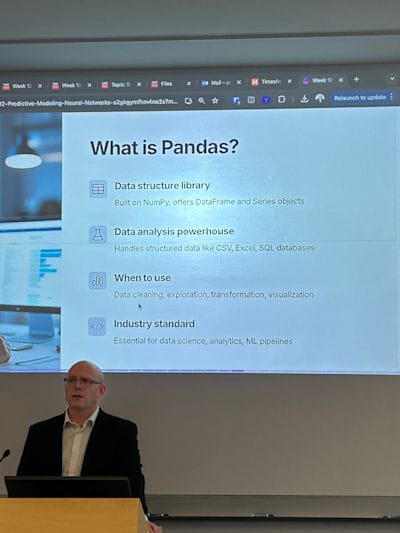
Reflecting on my First Term as an Adjunct Professor
There are four key roles when teaching a class: preparation and research, teaching in class, assignments and marking, and administration....
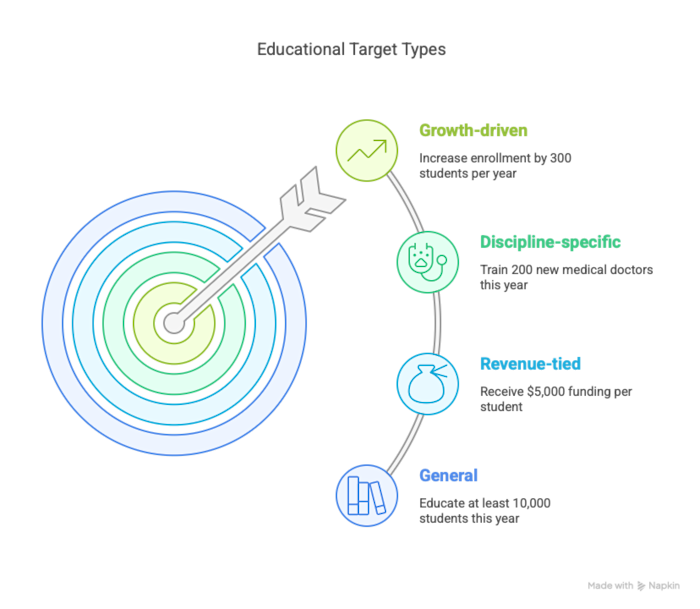
Setting Enrollment Targets in Higher Education - Part 1: What Are Enrollment Targets—and How Do We Set Them?
Good targets follow the SMART principle: Specific, Measurable, Actionable, Realistic, and Time-bound. But enrolment planning layers on additional complexity that SMART alone doesn’t capture....
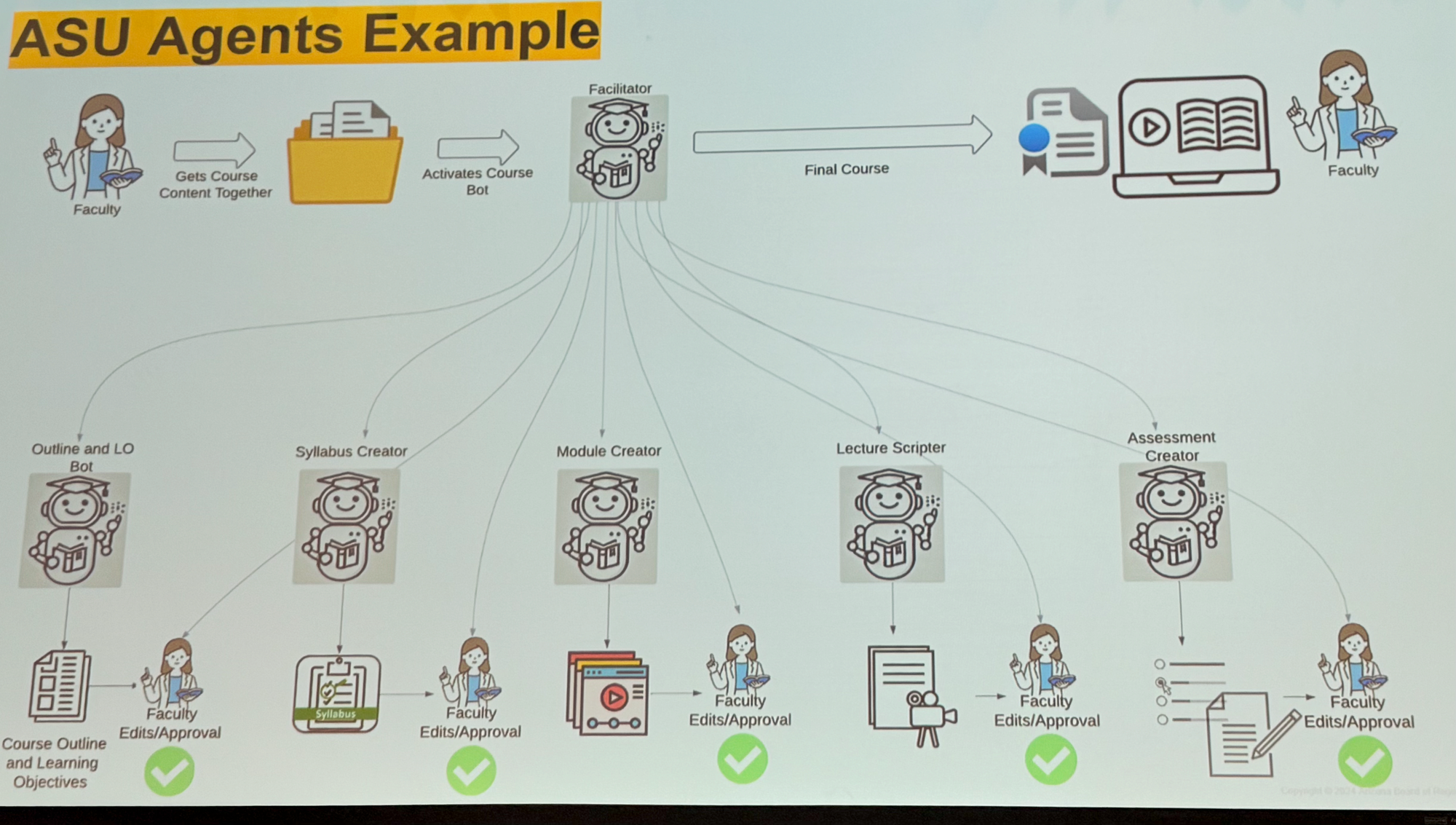
AI-Cademy Canada: Five Takeaways on AI in Higher Education
AI is changing everything in higher education, but that doesn’t mean every institution needs to dive in headfirst. Thoughtful, strategic adoption is key. At Plaid Analytics, we’re working with universities to ensure AI is useful, ethical, and impactful....

7 Practices Research & Data Analysts Can Learn from DIY-ers
Research and data analysts in higher education, like many public sectors, find themselves doing a lot with a little. Just like tinkerers and DIY-ers you call up about a problem with your sink, analysts are problem-solvers in the student information and processing neighborhoods of their institutions....
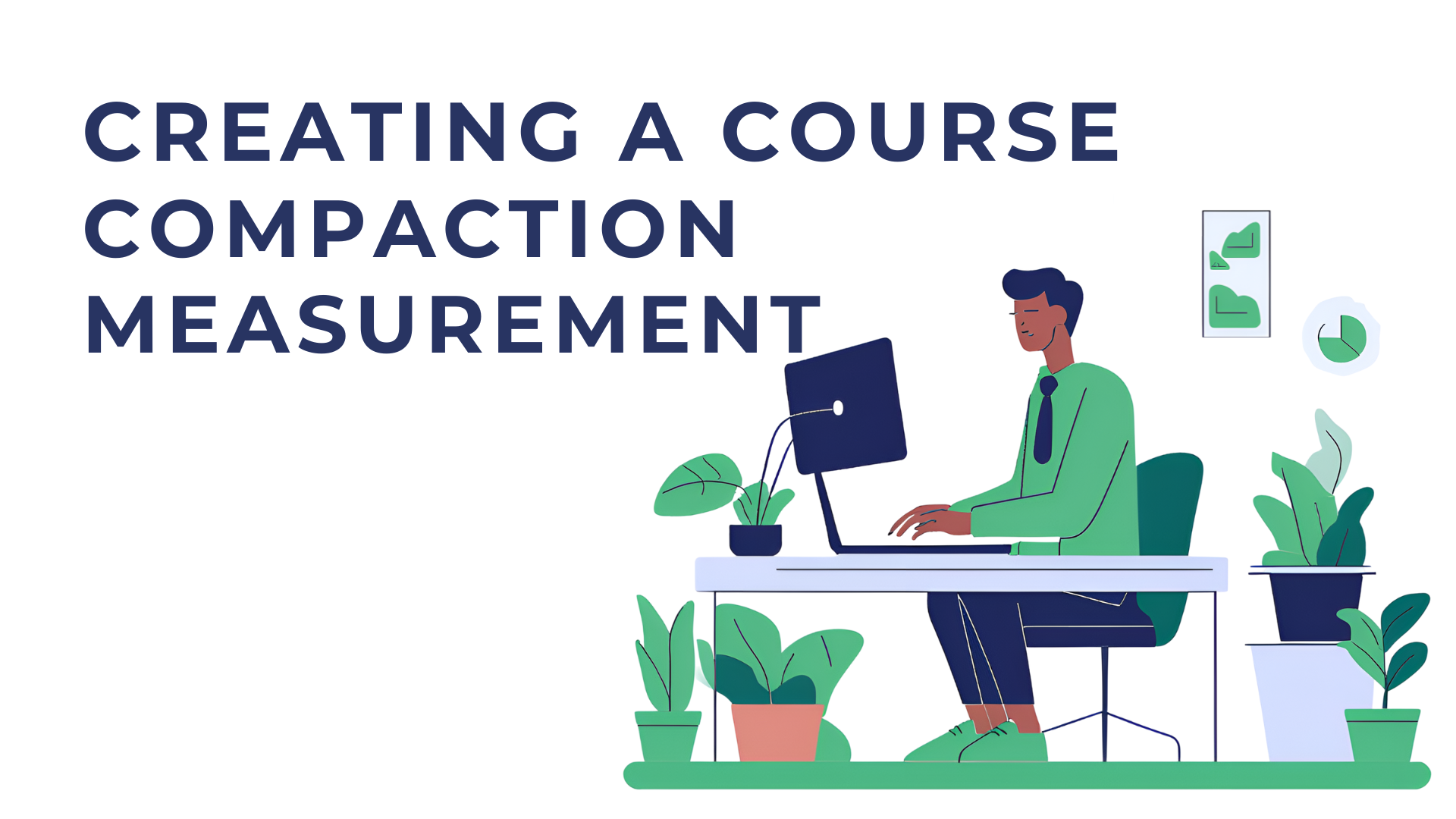
6 Steps to Developing a Metric to Understand Course Compaction
Just as strategic enrolment management looks at metrics at the institutional, department, program, and course level, so too should course compaction and curriculum offerings be understood at different levels of aggregation....

Four Ways Course Compaction Benefits Instructors
While instructor FTEs and student contact hours may go up due to course compaction, strategic thinkers understand that class size, classroom amenities, and instructor workloads impact student learning experiences and success....

6 Indicators of Healthy Course Compaction
In the continuation of the series on course compaction for strategic enrolment management, this post discusses what student and course metrics might indicate healthy course compaction....

Course Compaction: Indicators of Negative Compaction
Course compaction can improve student program progression rates by streamlining course offerings, but as with any enrolment management initiative, there must be metrics developed to evaluate its effectiveness....
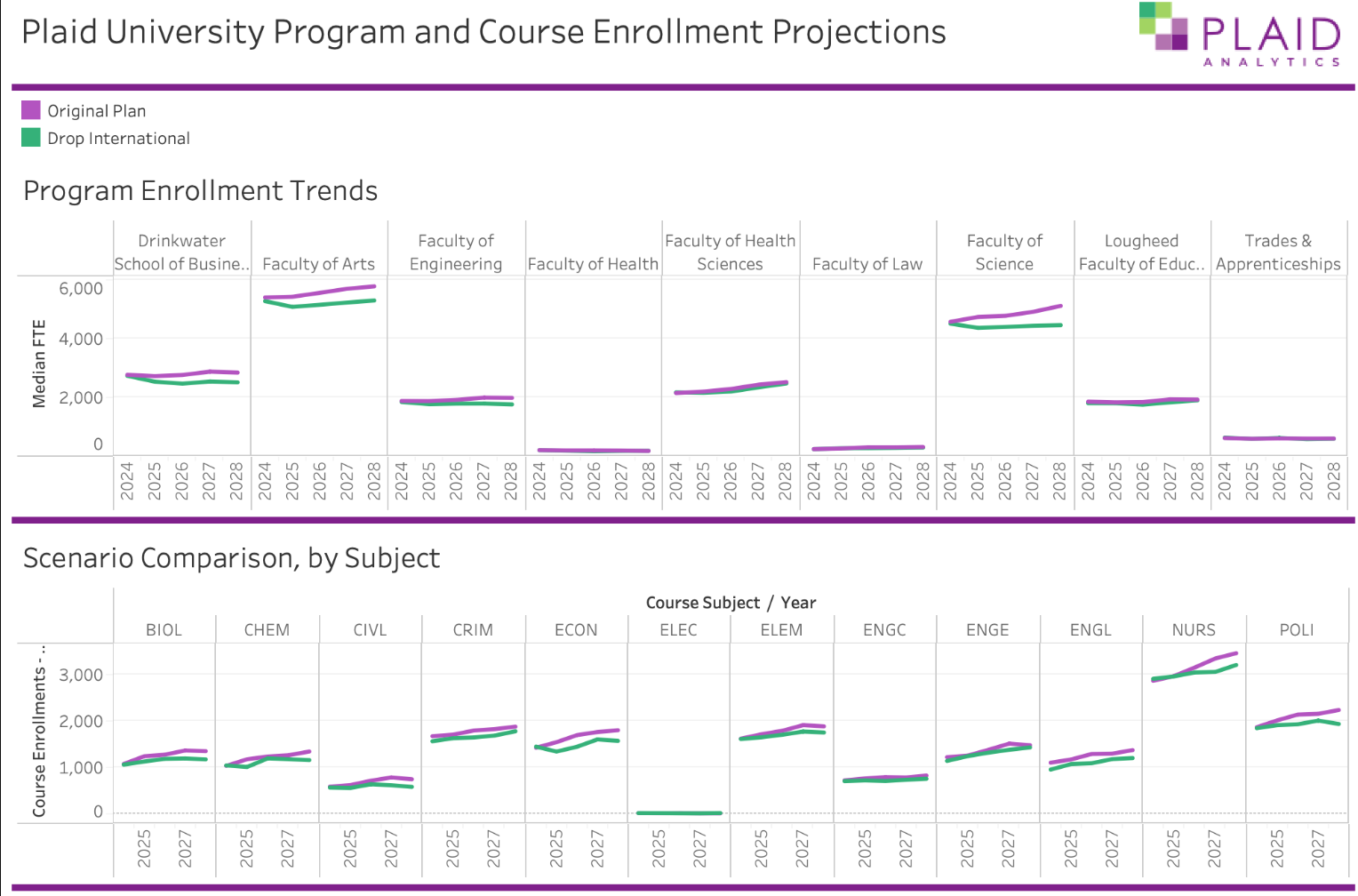
Announcing Course Forecast
Announcing Course Forecast: an innovative tool that brings multi-year, scenario-based planning capabilities to course offerings. Designed to help institutions stay agile, Course Forecast provides key insights that support efficient, data-driven decisions in a dynamic enrolment landscape....

What Impact Does Course Compaction Have on Student Success?
We’ve been revisiting what we mean by course compaction, how to measure it, and evaluate whether courses are too compacted or not enough, and what student-success-sponsoring course compaction looks like....
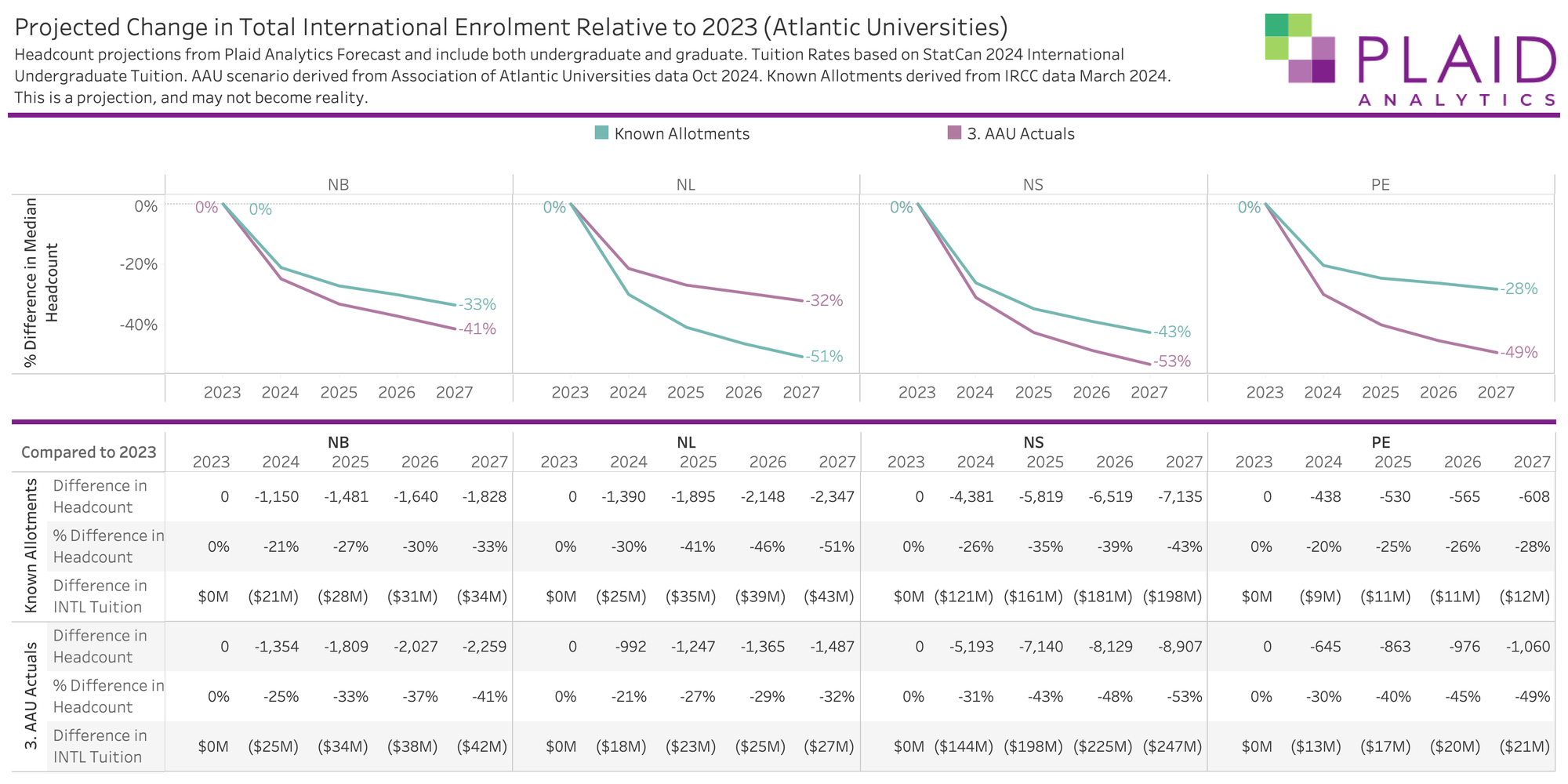
Brace for Impact: Projecting International Enrolment Declines in Atlantic Canadian Universities
The ripple effects of international enrolment declines will be felt across budgets, programming, and staffing. Yet, hard times have often been the catalyst for strategic reinvention....

Making Reports Memorable: New Research on Statistics and Stories
Data storytellers shouldn’t shy away from repeating themselves. It’s how people learn and remember important concepts, theories, and facts. Story is at the root of how cultural and organizational change happens....
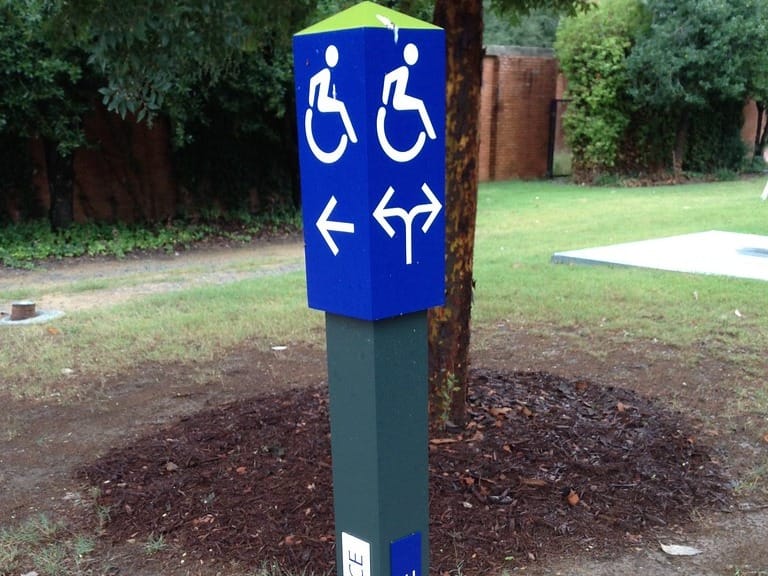
Redefining Accessibility in Higher Education: Embracing the Social Model of Disability
For post-secondary institutions, many retention initiatives focus on identifying students at-risk for attrition but retention planning for students with disabilities must include a culture that supports accessible design from tools and pedagogy, to service and systems design....

Building a Data Governance Team from Within: Matching Data Governance Roles to Existing Employees
Data governance is already happening at your institution, whether or not you have an explicit framework. As Bob Seiner, non-invasive data governance expert puts it, your “Data stewards are already in the building,” you just need to know where....
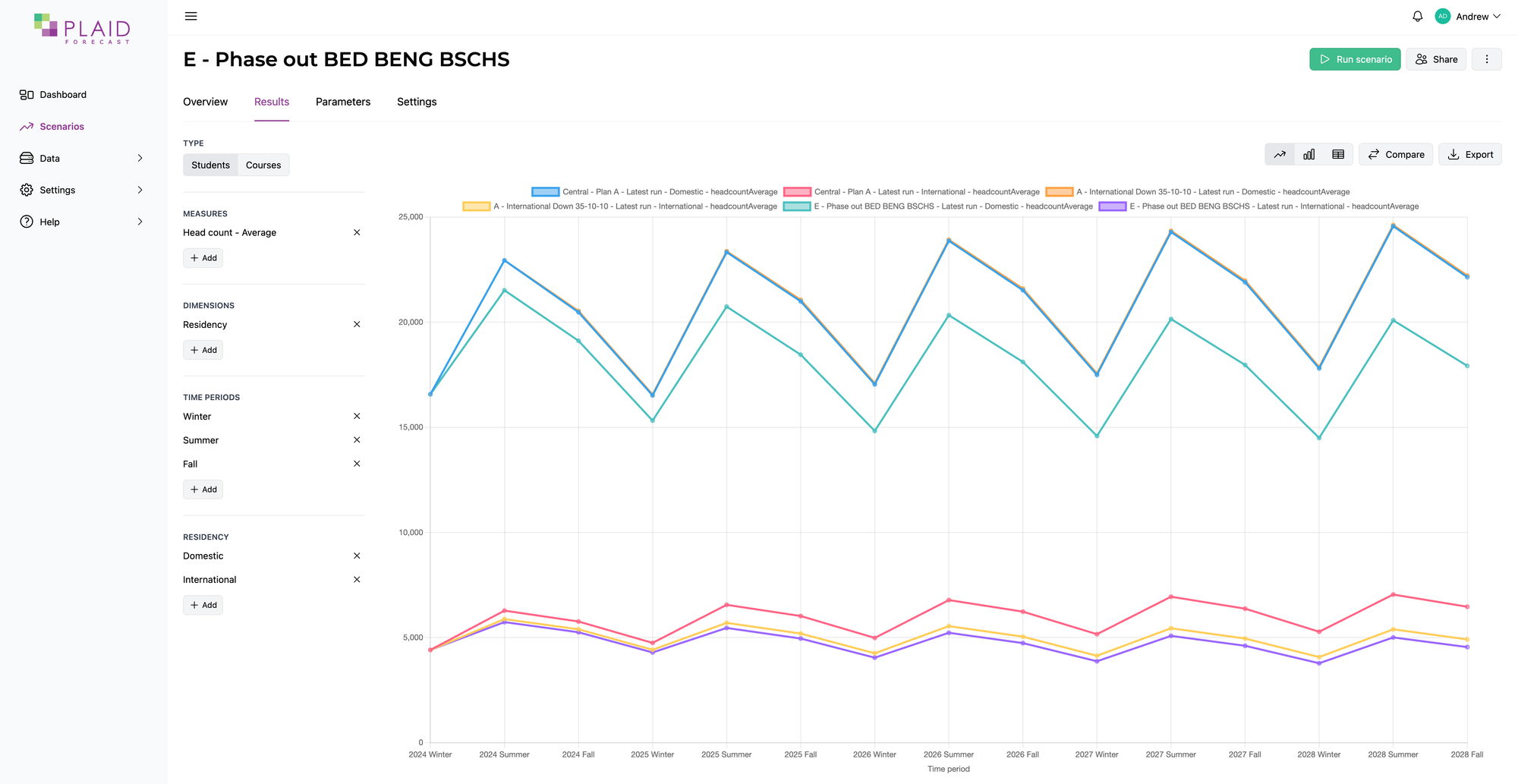
Navigating Program Closure in an Era of Budget Cuts
Conducting analysis in advance ensures that program closure decisions are strategic, transparent, and aligned with the institution's long-term goals. It helps academic leaders make data-informed choices, mitigate risks, and optimize resources while maintaining quality and supporting student success....

Data Literacy & Governance for Leaders, Strategic Planners, Operations and Financial Managers
In higher education, leadership and management steer their institutions toward success. However, there are data literacy skills that can get overlooked by those in leadership, strategic planning, operations, and finance roles....

Data Governance in Higher Ed: Empowering IT Professionals
Every person on campus, from employees, leaders, and students, will interact with the work produced by IT professionals. IT employees can be a crucial asset in data governance adoption, promotion, and management....

Data Governance in Higher Education: Empowering Admissions and Financial Aid Officers
Good data governance practices, or the lack thereof, can impact a student's earliest impressions of an institution, as they interact with Admissions and Financial Aid Officers. These professionals are central to shaping student experiences and ensuring institutional success....

Mentorship in Unexpected Places
Following my post on careers not being linear, this week I was hoping to write about the value of mentorship. Sometimes life throws you a curve ball that hits harder than you expected....

Enhancing Data Literacy in Higher Education: Data Entry, Records, and Registrar Teams
Data entry professionals are often the first to spot issues in procedures, identify policy gaps, or flag system failures. Their deep knowledge of front-end operations is invaluable for data governance....

Data Governance Readiness: Addressing Overlooked Data Literacy Skills in Higher Education Roles
In preparing for a formal data governance program, an institution should be aware of and address these gaps through a basic data literacy training program for all employees. A data literate organizational culture is key to the success of a data governance program....

Happy 8th Birthday, Plaid Analytics
June 20, 2016. Eight years ago today, Patrick Lougheed and I announced the start of Plaid Analytics. It’s been a heck of an adventure, and we’re just getting started....

Cultivating Advising Success: A Strategic Approach to the Advising Review
Taking the time to do an advising review is key to both determining how much of a restructure is necessary, and to determine what kind of model to restructure to....

Cultivating Advising Success: Advisor and Advisee Types
Developing an advising team requires a similar approach to building a cooperatively-maintained greenhouse: identify distinct needs for specific student groups then develop a team of advisors with complimentary roles and skills to serve those needs....

Cultivating Advising Success: Structural Models
Many post-secondary institutions have a mandate to serve their local community as well as international students, so the advising approach must be designed to meet the needs of both groups. Many institutions practicing strategic enrolment management choose to go with a hybrid model for this reason....

Cultivating Advising Success: Theoretical Approaches
Academic advising has gone through three main theoretical evolutions: Problem-based, Prescriptive-based, and Developmental advising. Best practices for advising may differ depending on the educational offerings and community they services, many institutions are moving to a Developmental approach....

Cultivating Advising Success: Should You Restructure Your Advising?
The solution to a struggling advising unit is not always a redesign; while restructuring can be an obvious way to show students you as an institution are addressing the challenges, it can be less effective than taking a more strategic, holistic approach to understanding the units’ challenges....
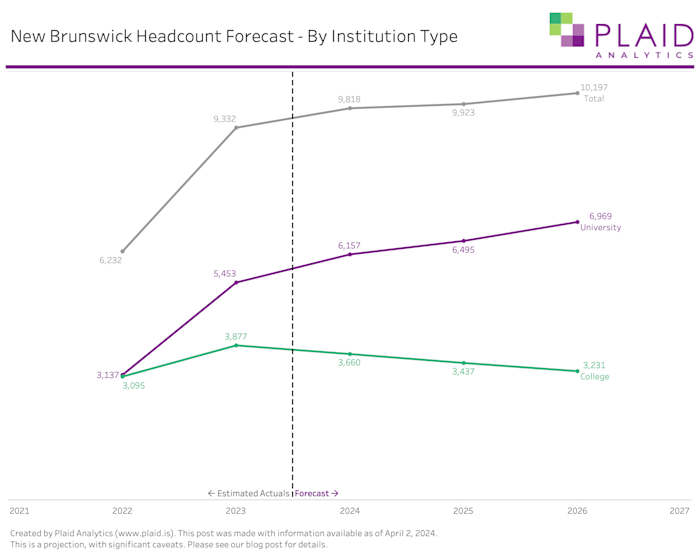
Is New Brunswick Being Shortchanged on International Student Allocation?
With major changes to Canada’s international student visa allocation rules beginning this year, it has been an exciting/nerve-wracking period for enrolment planning in Canada. This analysis suggests New Brunswick is being short-changed on allocations relative to their share of the population....
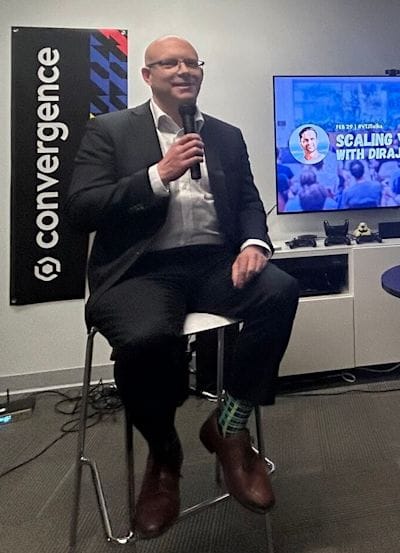
On the hot seat. Pitching Plaid Analytics.
Within Canadian higher education, everyone has heard about the international study permit changes. In the tech community, many have but they are less familiar with the impacts. Taking the time to explain it to an audience outside of higher ed has helped me think through the core message....

Own Your Decision-Making Flaws: Tips for SEM Leaders
Most leadership teams and planning committees are made up of the core data users. But leaders may not understand their own decision-making habits and are unable to describe their data needs. Leaders are better able to contribute to data strategy discussions when they know the underlying issues....

Understanding Institutional Micropolitics: Tips for SEM Leadership
Implementing strategic enrolment management at any institution is a political process. When institutions lean into, and explore this reality, they are quicker to garner support from employees and administrators for SEM, and are better prepared to implement a SEM framework....
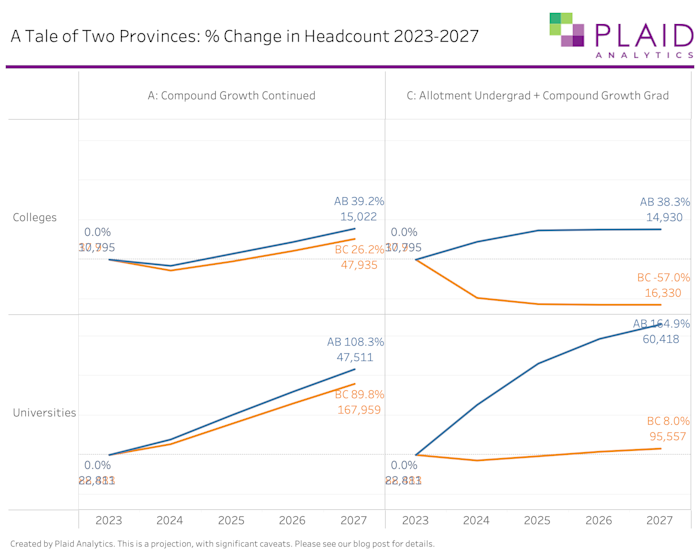
A Tale of Two Provinces: Projecting Enrolment Impacts of Study Permit Changes in Alberta and British Columbia
It’s not too often that the federal government makes a policy that so directly benefits one province over most others (technically two provinces will have large growth: Alberta and Quebec, but we think the latter will struggle to hit their higher target near term)....
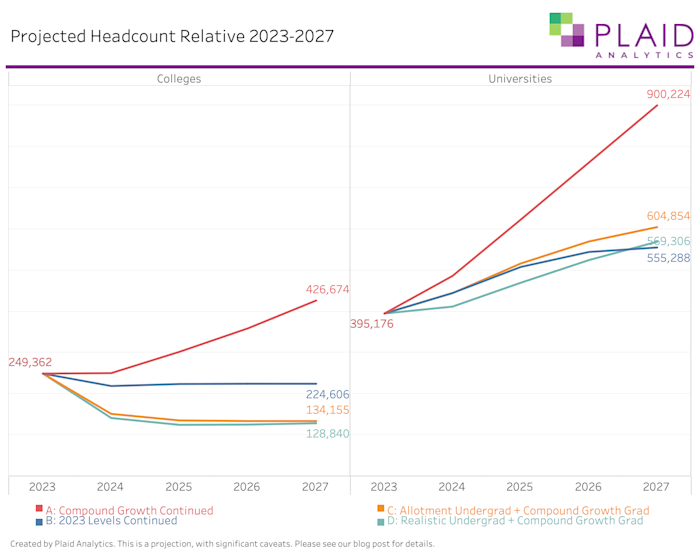
Modelling Impacts of International Study Permit Changes in Canada
Since summer, the Canadian federal government has been musing about cutting back on new international student study permits. Well, it finally happened. This post discusses some of the potential impacts, and provides an forecast of how enrolments will change as a result of this new policy....

7 Reasons to Replace Your Professional New Year’s Resolutions with a Bingo Card of Possibility
When I was hired by Plaid we created a 60-day plan of goals for onboarding. As the goals shifted over time, I became focussed on what I wasn’t accomplishing. This year, I wrote a list of potential achievements and put them on a bingo card....

The Importance of Data Literacy Service Planning in Institutional Research
Without a strategic service approach for information or institutional research offices, users are left to wander through a vast collection of data in hopes of finding the right metric, at the right aggregation level....

Social tagging: A Data Literacy Quick Win for Large Organizations
Software providers often promote tags as way to help users find content. Yet many data analysts and institutional research administrators, including myself, are quick to dismiss them. But focusing on the messiness of end-user assigned tags ignores their function as a data literacy learning tool....

Why the Academic Library is your Friend as an Institutional Researcher
While conferences offered idea generation and excitement for the institutional research office, regular reading kept me energized about my work. Giving analysts time to read and collect ideas is an easy retention strategy....

Using Technology in Academic Advising to Empower Students
As technology shapes how we find information, I wanted to know what social media says about academic advising. Most Tiktok videos tagged with #academicadvising were negative. How can institutions use technology to change the story told on social media?...

Beyond the Strategic Enrolment Plan: Examples of Target Setting Processes in the Frameworks
Aside from assessing the weight-bearing capacity of the framework, introducing a new process or task for strategic enrolment management differs between the four frameworks. In this post we’ll review how institutions who want to implement enrolment targets would do so in each of the frameworks....

Beyond the Strategic Enrolment Plan: Indicators of a Resilient Framework
The more highly structured a framework, the more decision-approval and accountability is transparent, and data is evident in proposal development and assessment. An institution with a SEM plan can be responsive regardless of framework....

Beyond the Strategic Enrolment Plan: Framework Challenges & Knowing when to Restructure
When SEM becomes a struggle beyond a single process, or when multiple targets seem unachievable, the framework may no longer be able to bear the weight the institution requires....
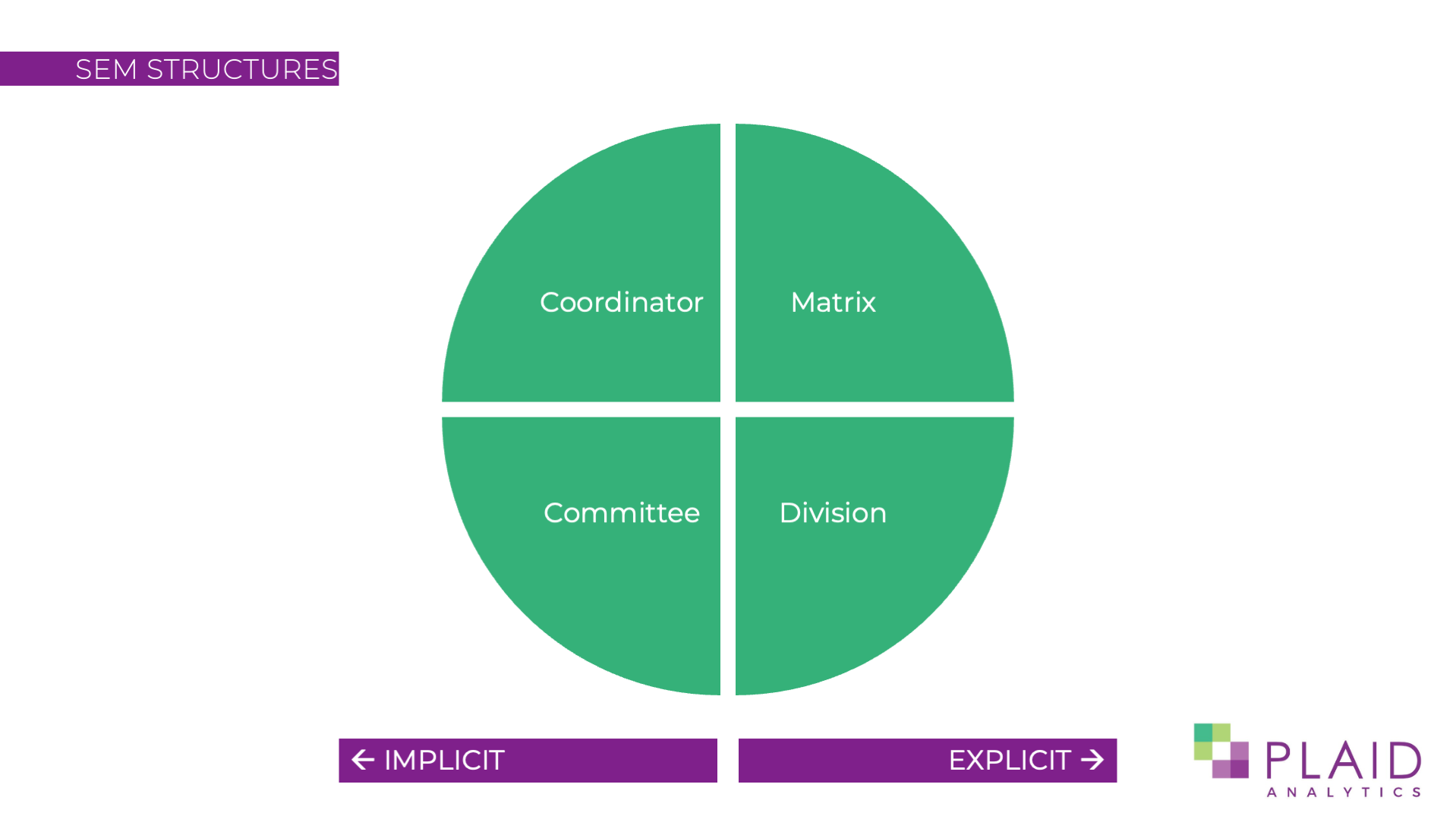
Beyond the Strategic Enrolment Plan: Uniting Academics and Administration in SEM Frameworks
Many post-secondary institutions struggle with bridging communication and decision-making between the Academic Units and Financial or Administrative perspectives. SEM plans are tools to align perspectives and priorities, and frameworks provide the structure for building together....

Beyond the Strategic Enrolment Plan: An Introduction to SEM Frameworks & Why They Matter
As the car picked up speed and passed the other, I couldn’t help but see the parallels with Strategic Enrolment Management planning and structure theory in higher education. A SEM plan is built appropriately for its frame, supported by an effective pit crew, and steered by a skilled driver....
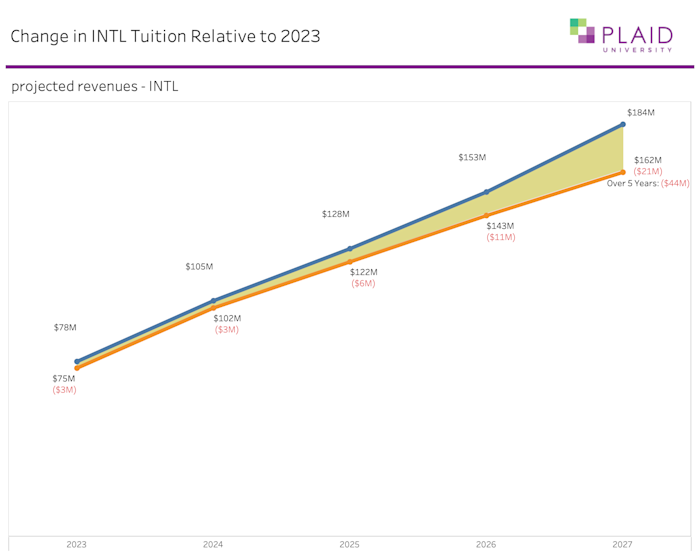
Canada Considering Cap on International Enrolments. What's the Impact?
If I were a Provost, I'd be asking my Institutional Research team to game out what these scenarios might look like compared to our current plans. Here's what we were expecting at Plaid University:...
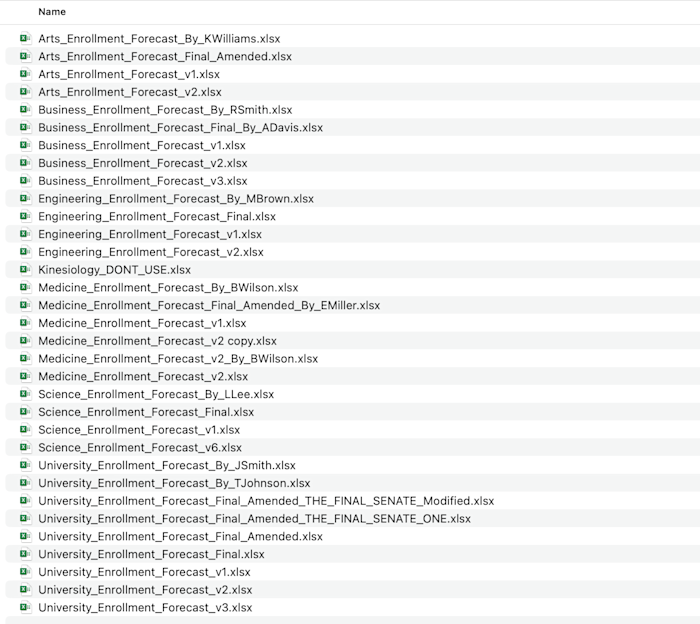
Is Final Final Final Projection the right Final file?
Scenario planning allows your institution to better plan for what happens when things change, and it can be automated to update in near real time if you need. But it's very hard to keep track of all those scenarios unless you have a robust system that was designed for collaboration from day one....

Why We Built Plaid Forecast
“I’ve got a PhD in robotics engineering, and you’re telling me I have to get you to run the enrolment forecast?” – Associate Dean. Why we built Plaid Forecast: As expatriate institutional analysts, policy directors, project managers, and software engineers, we understand the challenges facing enrolment forecasters. This year,...
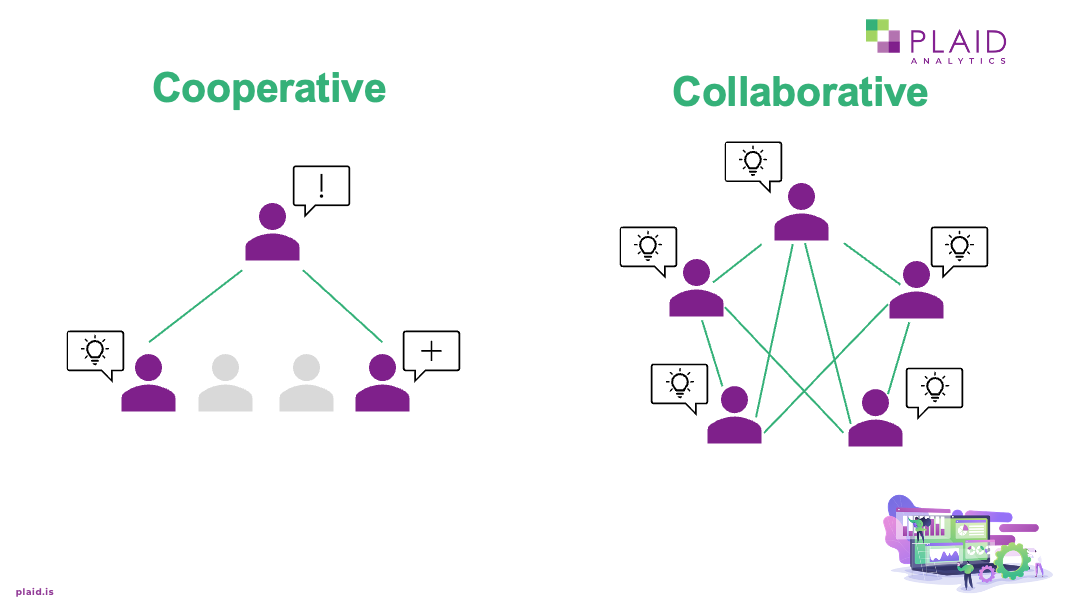
Is Enrolment Forecasting Cooperative or Collaborative?
Institutional Researchers can unintentionally end up as gatekeepers to the collaborative enrolment forecasting model. They've built it by hand, using tools and skills available to them at the time, but the models aren't built for scale. Plaid Forecast is....
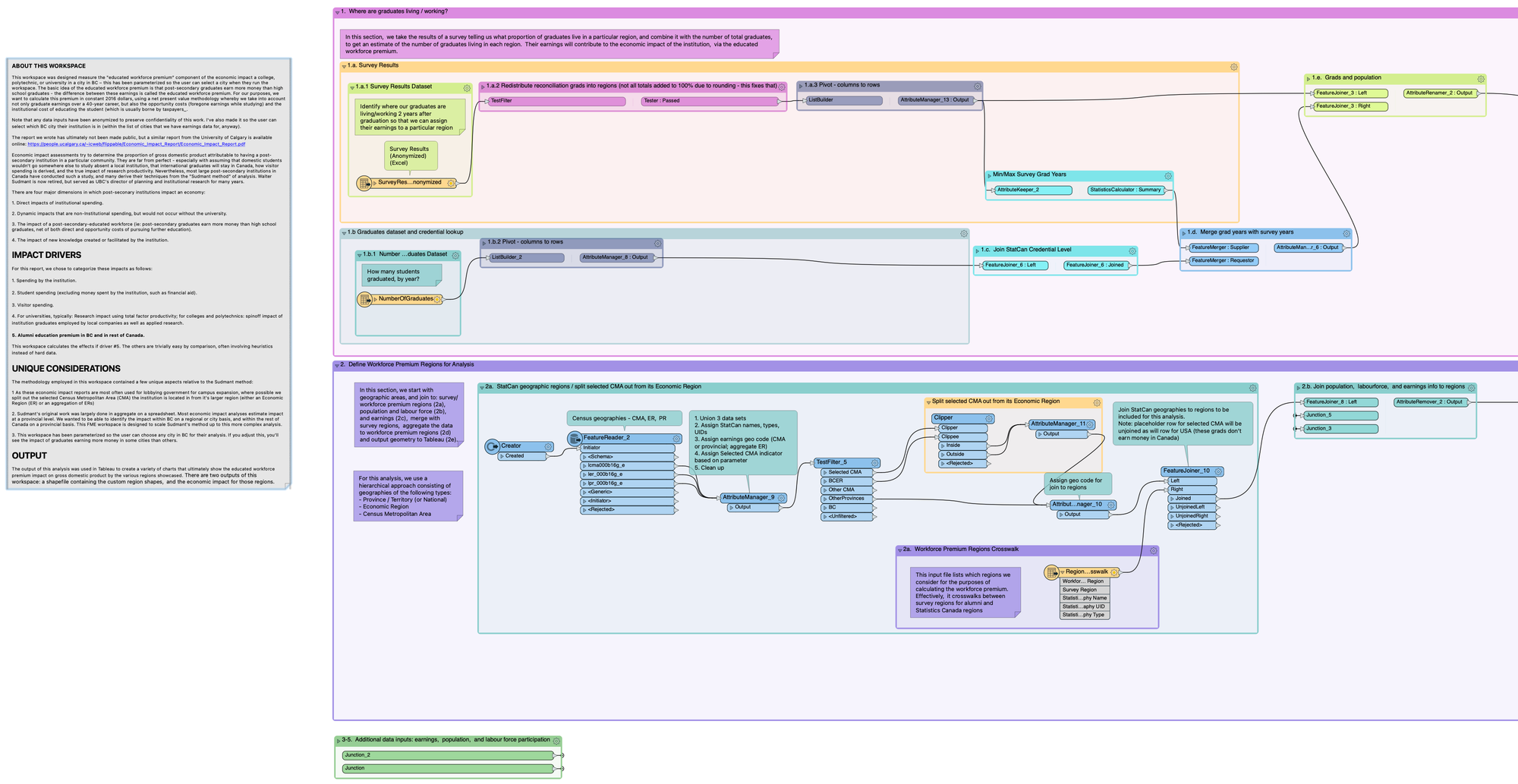
Why Write Code?
Clearly, I love SQL. But do I use it anymore? Rarely. Instead, I use visual workflows for my data integrations....
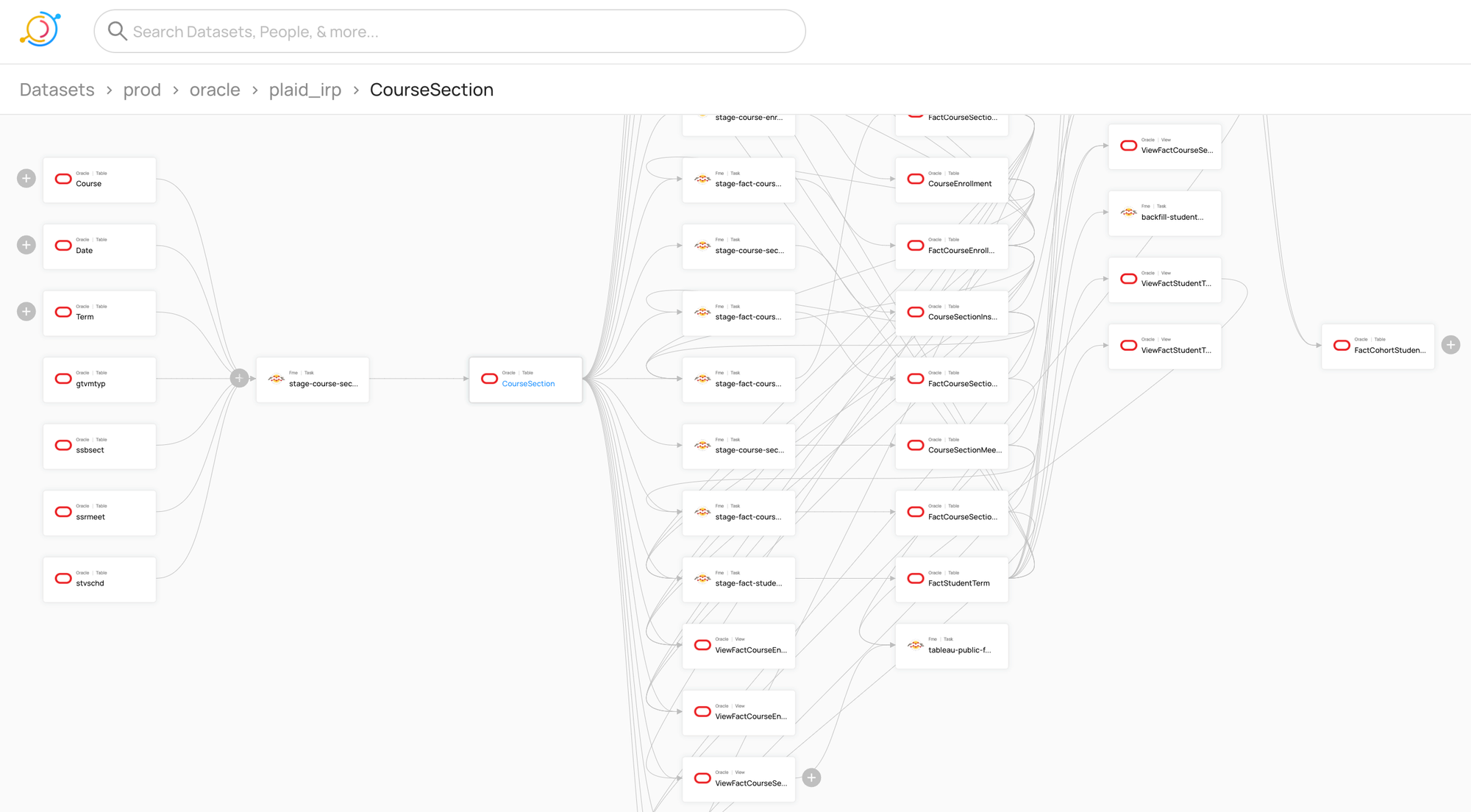
How Metadata Management Tools Support SEM
Implementing a metadata management tool solves the problem of data analysis requiring perusing thousands of fields, hundreds of tables and dashboards, and speaking with different teams to pin down definitions and data origins that live in the mind of a specific person....

How Data Governance Supports SEM
Building transparency in SEM and enrolment forecasting is key to ensuring alignment and collaboration between your stakeholders, and data governance helps to support this transparency while keeping data safe and secure....

Enrolment Forecasting in Support of SEM
SEM prompts consideration of the many variables, both academic and administrative, that impact a student’s experience, progress, and future enrolment. Data, or the lack thereof, influences an institution's ability to define what future student populations may look like....

The Role of Data Governance in Enrolment Forecasting
While some might argue that a forecast is just data about students who aren’t even real, the forecast is a great place to tie in data governance. In our research, every data governance leader recommended starting small, with a pilot. An enrolment forecast is a great pilot initiative....

Benefits of Mapping Data Lineage
Promote trust in your data with a metadata management tool, which ensures clarity of who is accountable for the accuracy of a particular dataset, who to turn to if questions arise, where a piece of data originates and how its used....

Benefits of a Business Glossary
Without a business glossary, terms can be applied differently and as a result, two reports generated by different end-users may provide different answers to the same question....

Peak of Data Integration: 2022 FME User Conference
Automated data integration enabled Douglas College to generate a staged release of course registration timeslots over a two week timespan, which will grant over 20,000 students access to registration. This dynamic timeslot process better adapts to evolving registration policy and practices....

How Professional Relationships Can Guide Your Career Path
Lynne helped me to understand the return on investment from implementing Tableau: In my case, I was saving about an hour every week, in addition to new capabilities. I was earning about $50k, so $30/hour. This meant Tableau paid for itself in 33 weeks....

Forecasting Enrolment in New Programs
New programs introduce complexity to your enrolment forecast. By definition, they do not have past history to rely on for a prediction – what is an enrolment professional to do? Here’s how to handle them in stride:...

Effective Partnerships Between Academic Units and Central are Key
Answering, “How many students are we going to have?” involves not only predicting the future but defining the parameters in which it is possible. Neither central administration nor academic units can successfully forecast future enrolments without the other....
Welcome to the new Plaid.is - making your SEM data work for you
We are very excited to announce the launch of our newly designed website, built from the ground up....

Tips for Moving to Near-Real-Time Data in Higher Education
Learning to work with daily or real-time data feels like learning to drink from a firehose. As more universities and colleges move to having near-real-time data, we offer these helpful tips....

5 Reasons to Start Your Career as an Enrolment Services Data Professional
Often when we think of data professionals in higher education, we think of institutional research and analysis, and IT. Here I’ll talk about why starting my career as an enrolment services analyst helped me hone my data craft....

The Data Only Updates 3x Per Year?
Snapshots can also be helpful with enrolment forecasting – in particular, many users I speak to don’t want their forecast to change daily, instead every second week or even every month....

Still Rolling Over Manually?
We used to update our scenario data monthly during the fall term and at end of the fiscal year. After this all was quiet until the dreaded rollover to the next academic year in summer....

What Programs Do We Even Offer?
Working in Institutional Research, I often was asked questions around “What programs do you offer?”, or “How many programs are there?”. You’d be surprised that answering these questions is not as easy as it sounds....

When is a New Scenario a New Scenario?
Scenario versions are based on user-controlled parameters, automatically updated parameters, and changes in your data model. Tracking the outputs of your scenarios allows you to go back and reflect on the results, seeing where there are opportunities for improvement....
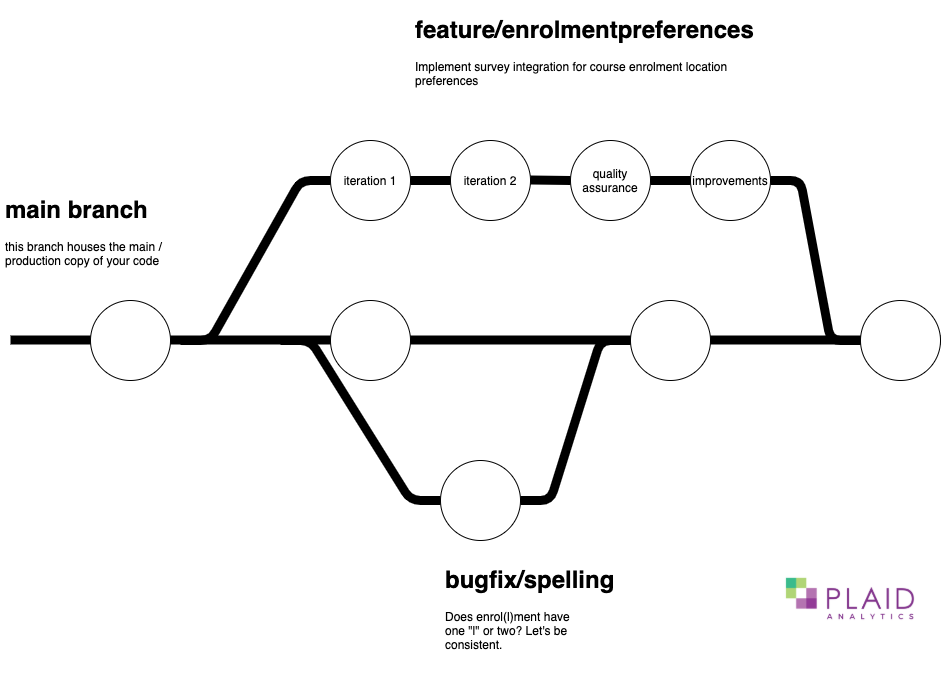
Why Version Control Matters to Enrolment Forecasters
Enrolment forecasts are often large and complex models, involving information from databases, models, spreadsheets, and several other places. These models often involve thousands of lines of code and there are many opportunities for human error. I recommend using software to support versioning....

Plaid joins SFU VentureLabs
We’re very excited to announce our newest partnership with SFU VentureLabs, an accelerator that focuses on science, technology, and innovation-based ventures. VentureLabs was recognized as a top North American accelerator in 2017 by UBI Global....

The Importance of Reflection in Enrolment Forecasting
You’re finished enrolment forecasting for the cycle. The targets you helped developed made it through Senate, and you can breathe a sigh of relief. Right…?...

20 years of wonder. Happy birthday, SFU Surrey
My undergrad degree was a transformative experience. Like my current job, the path to there wasn’t all that linear either. Back in high school, I vowed I would attend university away from home, live in a dorm, and so on. But that isn’t what happened....

Using a Database for your Enrolment Forecast
Databases are great at storing the inputs and outputs of your enrolment forecast. Depending on your configuration, horsepower, and forecast design however, they may be very subpar for the steps that happen between input and output....
Getting Your Intakes Approved
If you work in Institutional Analysis, Institutional Research or similar, you know getting your five-year plan approved can often be more of a marathon than a sprint. There are consultations (and consultations, and consultations…), new directions, and almost always a surprise or two....

When historical averages let you down
When we’re forecasting student headcount and course enrolments, using historical averages for student retention is a common practice. There’s several different situations where using historical averages might let us down....

Tripling Your Tuition Revenue?
Poof – you’ve now tripled your revenue in only five years. All from growing student intakes by 10% and rates by 15% per year. I’m providing this tongue-in-cheek example as many people struggle with non-linear growth patterns, and overlooking those patterns at could result in erroneous conclusions....

Learning Together: Leveraging Paired Analysis to Make Your Enrolment Forecast Successful
Paired analysis is an excellent method to encourage stakeholders to work more collaboratively on an enrolment forecast. As an analyst, you can learn immensely from your colleagues working on the “business” side of the institution....
Having Multiple Professionals Build Your Enrolment Forecast
What happens when your primary enrolment forecaster gets sick? Or gets another job? Would your institution be left scrambling?...
It's the most wonderful time of the year... for enrolment forecasters
It’s that time of year again. It’s when enrolment forecasters shift gears from “let’s figure out what the possibilities are” to “wow, the rubber is really hitting the road. We’ve got to have an enrolment plan in less than a month”....
Happy 5th Birthday, Plaid
We’ve learned a lot over these years, and we couldn’t have done it without partnering with leading post-secondary institutions and related organizations....

Two decades of data wrangling, and I’m still learning new things
Many institutions we work with struggle with the subscription models employed by many software vendors. Each time you onboard new staff, there is an added license cost that you didn’t plan for in your budget. But with FME, the cost of adding new staff to the platform is exactly zero....
Lessons from my (first!) live interview on the Ravit Show
When Ravit first approached me about being on the show, I was a bit nervous with the idea of presenting live to a global audience. But the more I thought about it, about the more I realized this is exactly the kind of thing I’ve been working towards....
On industry professionals giving back to students in a pandemic
This is a weird year to be a student: some haven’t been on campus since March, others have never met their classmates and instructors in anything other than a virtual setting. In this context, I think our role as industry professionals is more important than ever....

Tableau Changed My Life
Back in 2007, I downloaded a free trial of Tableau Software, a company no one I knew had heard of. Their mission was to help people see and understand their data. How many software tools have changed your life? Tableau changed mine....
